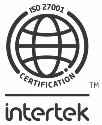What Can Traditional MGAs Do to Keep Up with Agile Startups?

Digital transformation continues to rock the boat in the insurance industry, with technology increasingly acting as the new middleman between insurers and clients. In 2021, investment in Insurtech start-ups grew a staggering 87%, raising $14.4 billion across 644 deals, and whilst 2022 proved a tough year for some Insurtechs (and indeed the wider tech industry as a whole), the overall trajectory is only headed in one direction. With freshly minted start-ups in the sector among the main drivers of investment, how can large scale MGAs keep up?
To stay ahead of the curve, traditional MGA insurance providers must invest in digitisation to create the agility and flexibility that mirrors the methodologies of these newer intermediaries, whilst putting the advantages that they have (data, human resources, and brand reputation to name a few) to good use. They must be empowered to create relevant products for audiences demanding modern end-to-end technological experiences.
In this article, we explore how start-ups are revolutionising the insurance industry with agile solutions and how, as a large-scale MGA, there is an opportunity to adapt your practices to provide longevity as we move into 2023.
Agile start-ups and insurtech
As tech-driven innovation reshapes the insurance industry, investors are rapidly taking note and the number of insurtech start-ups is skyrocketing. What are the key factors driving growth?
Insurtech has enabled the insurance industry to step up its user experience, offering services which are far superior to traditional providers. The introduction of technology such as smartphone apps, online policy handling and claims processing tools means that customers (and indeed brokers) can access their insurance policy information with ease. Embedded platforms also enable insurers to blend with other sectors such as healthtech and automotive technology seamlessly, meaning insurance no longer needs to be treated as a standalone proposition.
What’s more, tech-based insurance providers are finding ways of constructing operating models that are far more cost-efficient than legacy providers. Cloud-based technologies are removing labour-intensive tasks and increased access to data allows for more informed decision making, as well as a reduction in email overload (which has historically plagued the MGA given its place in the middle of the insurance value chain). As a result a new wave of tech-driven MGAs is emerging, building cutting-edge products for the increasingly demanding customers of a digital age, and minimising the costs involved with selling and managing their policies.
The impact of Insurtech on mature MGAs
New solutions offered by Insurtech intermediaries provide complete end-to-end services, negating the value of some prior MGA-carrier relationships and often significantly decreasing total cost of ownership for carriers through technology.
This means that some more established MGAs are being challenged by emerging start-ups which offer newer, slicker product offerings and customer experiences. Many Insurtechs that have chosen the MGA structure have been founded by non-insurance folks who are bringing their tech and data expertise from other industries to the table. Whilst this obviously has potential drawbacks, it has certainly given traditional MGAs a different competitive landscape to consider.
For MGAs that haven’t paid enough attention to the need for ongoing digital transformation, or aren’t even discussing new technology, it is clear they will be at a significant disadvantage. Strikingly, 100% of carriers cited the importance of technology expertise and data mastery when selecting an MGA partner, with 89% of MGAs sharing the same view.
An increasing number of consumers want insurance products instantly, in line with the ever-evolving digital landscape. A lot of clients no longer want to sit down regularly with an agent to discuss insurance policies. This doesn’t mean that there isn’t a place for the human expertise that these intermediaries can offer; it’s just that this will need to be served up in a different fashion in order for them to truly deliver value.
Positive disruption
While the introduction of Insurtech intermediaries is certainly disrupting the industry, it isn’t all doom and gloom for the traditional players. This shift is pushing existing MGAs forward by driving the need to embrace technology, and when looking at the bigger picture, could provide a multitude of benefits across the value chain.
Customers and brokers can receive a better all-round experience and access to new, innovative products and services. Carriers will be able to access data they may otherwise not have had at their fingertips, and thus have a better understanding of how exactly their capital is deployed. And, of course, larger MGAs will be able to keep up with increasing demand and competition.
Flexibility in large scale MGAs
Large scale MGAs can achieve digital transformation through numerous avenues, perhaps the most influential being the replacement of legacy systems with modern core PAS’ to revolutionise their approach to product creation and policy management . By digitising core services such as underwriting, billing, policy issuance, renewals, claims etc. through the use of automation, cloud technology and data analysis, existing MGAs can bolster their appeal with both carriers and end-customers (or indeed brokers).
Speed-to-market solutions like INSTANDA allow for adaptable test-and-learn environments which empower MGAs to get out ‘lightweight’ versions of new products quickly and easily. The MGA’s can then assess the performance of these products, before enhancing and tweaking them in line with their market’s demand. The ability to create, build and implement complex insurance products in weeks or months, as opposed to years, can help alleviate some of this pressure caused by the influx of start-ups. INSTANDA’s no-code technology (hosted via Microsoft Azure) also enables MGAs to say goodbye to the need for never-ending cycles of ‘change requests’ with their tech partner, drastically lowering their total cost of ownership.
With access to first-rate technology, MGAs can offer new products that target customer experience and provide public facing environmental, social and governance (ESG) solutions. Over 70% of insurers have ranked ESG as a top five priority for their organisation and thus the ability to build in these types of propositions/services to your wider portfolio is crucial.
INSTANDA'S Core Insurance Platform can help you stay ahead of the curve in a tech-driven industry
To find out more about INSTANDA and how it can help your MGA or insurance company initiate transformation, while staying in complete control of your operations, please don't hesitate to contact us.





